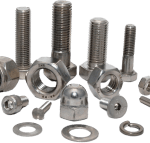Perfect Roofing Material for Your Home
How to Choose the Perfect Roofing Material for Your Home: A Detailed Guide for Long-Lasting Protection and Style”
Choosing the right roofing material for your home is a significant decision that influences the safety, energy efficiency, and overall aesthetic appeal of your property. A well-chosen roof protects your home from harsh weather conditions while also adding to its curb appeal. However, not all roofing materials are created equal, and the best choice depends on factors like your home’s architectural style, your local climate, budget, and the level of maintenance you’re willing to undertake. Here’s a detailed guide to help you choose the ideal roofing material for your home.
1. Asphalt Shingles: Affordable and Versatile
Asphalt shingles are the most widely used roofing material in the U.S. due to their affordability and versatility. They come in a variety of styles and colors, allowing homeowners to customize the look of their roof without breaking the bank.
- Lifespan: 15 to 30 years
- Pros: Low cost, easy to install, available in many styles, good fire resistance
- Cons: Shorter lifespan compared to other materials, may be less durable in extreme climates
- Best For: Homes in temperate climates looking for an economical roofing option
2. Metal Roofing: Durable and Energy-Efficient
Metal roofing is increasingly popular due to its durability, lightweight nature, and energy efficiency. Available in materials like aluminum, steel, and copper, metal roofs can last for decades with minimal maintenance.
- Lifespan: 40 to 70 years
- Pros: Extremely durable, reflective properties reduce cooling costs, fire-resistant, eco-friendly as it is often made from recycled materials
- Cons: Higher initial cost, can be noisy during rain or hail without adequate insulation
- Best For: Homes in areas prone to heavy rain, snow, or fire-prone regions
3. Clay and Concrete Tiles: Aesthetic and Weather-Resistant
Clay and concrete tiles offer a distinctive, traditional look often seen in Mediterranean or Spanish-style homes. These tiles are highly durable, resistant to fire, and can withstand harsh weather conditions, but they are also heavy and may require additional structural support.
- Lifespan: 50 to 100 years
- Pros: Extremely durable, resistant to fire and extreme weather, low maintenance, long lifespan
- Cons: Heavy, expensive, requires a strong structural framework
- Best For: Homes in hot climates or coastal regions due to excellent heat resistance
4. Slate Roofing: Timeless Elegance and Longevity
Natural slate is one of the most durable roofing materials available. Known for its sophisticated, high-end look, slate roofing can last well over a century with proper care. However, the high cost and weight may not make it suitable for all homes.
- Lifespan: 75 to 150 years
- Pros: Exceptionally long-lasting, highly fire-resistant, aesthetically pleasing, eco-friendly
- Cons: Expensive, heavy, requires specialized installation, can be brittle
- Best For: Historic or luxury homes, or for those seeking a premium, long-lasting roofing solution
5. Wood Shingles and Shakes: Rustic Charm with Natural Appeal
Wood shingles and shakes, typically made from cedar or redwood, provide a natural, rustic look that many homeowners find appealing. However, wood roofing requires more maintenance to prevent damage from fire, rot, and insects.
- Lifespan: 20 to 40 years
- Pros: Attractive, natural aesthetic, environmentally friendly, energy-efficient if treated
- Cons: Susceptible to fire (unless treated), requires regular maintenance, vulnerable to rot and insects in damp climates
- Best For: Homes in drier climates or areas where a rustic, natural look is desired
6. Synthetic Roofing: Advanced Technology for Durability and Style
Synthetic roofing materials, like rubber, plastic, or polymer composites, are designed to mimic the appearance of natural materials like slate, wood, or tile. These materials are durable, lightweight, and often more affordable than their natural counterparts.
- Lifespan: 30 to 50 years
- Pros: Cost-effective, lightweight, durable, and often indistinguishable from natural materials, eco-friendly versions available
- Cons: Not as widely used, may not offer the same level of authenticity as natural materials
- Best For: Homeowners seeking an affordable, durable, and lightweight alternative to natural roofing materials
7. Green (Vegetative) Roofing: Eco-Friendly and Energy-Efficient
Green roofs, also known as vegetative roofs, involve growing plants on a roof surface, which helps with insulation, stormwater management, and reducing urban heat. These roofs are eco-friendly and energy-efficient, but require proper installation and maintenance.
- Lifespan: Varies, depending on design and maintenance
- Pros: Excellent insulation, environmentally friendly, reduces stormwater runoff, improves air quality
- Cons: Higher upfront cost, requires regular maintenance and specialized design
- Best For: Homes in urban areas or for eco-conscious homeowners looking to improve sustainability and energy efficiency
Key Factors to Consider When Choosing Roofing Materials
- Climate Compatibility: Your local weather conditions play a major role in determining the best roofing material. For example, clay tiles are perfect for hot climates, while metal roofs excel in areas with heavy rainfall or snow.
- Lifespan and Durability: Consider how long the roofing material will last and how much maintenance it will require. Materials like slate and metal offer longer lifespans, while asphalt shingles are more affordable but may need replacement sooner.
- Aesthetic Appeal: Your roof contributes significantly to your home’s curb appeal, so choose a material that complements the architectural style of your house. For instance, wood shakes offer a rustic look, while slate is ideal for more classic, luxury designs.
- Budget: The cost of roofing materials can vary significantly. Asphalt shingles are a cost-effective option, while slate and metal are more expensive but provide long-term value.
- Energy Efficiency: Some roofing materials, like metal or green roofs, can help reduce your home’s energy consumption by reflecting heat or providing natural insulation.
- Weight and Structural Support: Heavier materials like slate, clay, and concrete tiles may require additional structural support. Always ensure your home’s framework can accommodate the weight of the roofing material you choose.
By carefully evaluating these factors and understanding the options available, you can select a roofing material that will not only enhance the beauty of your home but also protect it for many years to come.
















